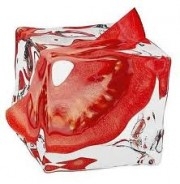Knife Sharpening
 Section Five: Sharpening Step by Step Haul out your sharpening rig and let’s grind some metal. Don’t have one yet? Check out the Sharpening Systems section below to see what suits you best. Got one now? Good. Remember the basics: burr, angle, abrasive, consistency and strategy. Let’s assume, for the sake of discussion, that you’ve decided to put a 15/20 double bevel on your chef’s knife. Because it’s a general purpose knife, it doesn’t need to have a mirror polished edge. As a matter of fact, a good medium-fine edge is what you’re aiming for. This is your angle and strategy. Because this is the first time you’ve really tried to change the horrid factory edge, you’ll need to begin with a fast cutting, coarse abrasive. Benchstone, waterstone, Sharpmaker grey stone – doesn’t matter. Start with the coarsest thing you’ve got. Determine how you’re going to establish consistency. With a Sharpmaker you simply stroke straight up and down. The EdgePro or Lansky rod-type systems have angle guides built in. Freehand sharpening requires a little more skill and patience, but if you use a guide system like the Razor Edge or simply place your thumb on the spine in the same spot every time, you can create a consistent angle. Advanced Section: Quote Warning: Math! If you want to be really anal about it, Leonard Lee offers this formula for creating freehand angles of less than 20 degrees. “Use the basic rule that a 1 degree angle subtends an arc of 1 unit at a radius of 60 units. The 1-in-60 rule is close enough for many purposes, particularly sharpening at low angles. You’ll find that a 10-unit rise in 60 units is about 9-1/2 degrees and a 20-unit rise is about 19 degrees.” This works out to raising the spine 1/8 inch (measured 1.5 inches back from the edge) for every five degrees of angle. The average chef’s knife is about 1.5 inches wide at the heel, so for a 15 degree angle you’d raise the spine 3/8 inch – about the height of six quarters stacked up. If your knife is wider or narrower than 1.5 inches, measure the height from 1.5 inches back from the edge, otherwise the math doesn’t work. It’s the height/width ratio that gives you the angle. Forget the math. In a pinch a large binder clip clamped to the spine will get you pretty close. So, let’s get started: 1) Establish your 15 degree angle. If you’re using a Sharpmaker, put the stones in the 15 degree slots. With a Lansky, Gatco or EdgePro system, slide the rod into the 15 degree setting. With edge guides, clamp the guide at the 3/8” height. Freehanding, raise the spine to 3/8 inch measured 1.5 inches back from the edge. Now you’re ready to create a burr. Be patient, this might take a while. To grind off the shoulders of the previous edge we’re going to be removing a lot of metal. That’s why we need the coarse stone. At this point it doesn’t really matter what kind of stroke you use. You can go heel to tip or just grind in circles. It doesn’t make any difference. To keep the aesthetics of the knife, you’ll want the bevels relatively even on each side. If you just grind one side until you get a burr, the other side will require much less grinding. Thus the bevels will be mismatched. To keep them matched, grind one side for about five minutes or so then switch to the other side, maintaining your approximately 15 degree angle. Feel the knife every so often to see if you can feel a burr. Keep grinding and switching sides until you detect a burr beginning to form. Remember, the burr forms on the side opposite from the side you are grinding. If you don’t remember how to check for a burr, see the picture earlier in the tutorial. As soon as you detect a burr, keep grinding on the current side until the burr runs the entire length of the opposite edge. If you use the Magic Marker Trick described below, you can save a little time on this step. 2) Repeat on the opposite side until you feel a burr along the full edge of the first side. 3) Optional: If you want to dress up the scratch pattern, switch to your fine stone and give the edge several passes on each side (at the same angle) to polish them out a little. 4) Establish your 20 degree angle. If you’re using a Sharpmaker, switch to the 20 degree slots. With a Lansky, Gatco or EdgePro system, simply change the rod to the 20 degree setting. With edge guides unclamp the guide and slide it forward about an 1/8 to 1/4 inch. Freehanding, raise the spine another 1/8 inch. If you switched to your fine stone, switch back to your coarse stone or the next one up, usually a medium stone. 5) Create a burr again at the new sharpening angle, going back to side one. This time you’re grinding the edges to meet at a 20 degree angle. This will happen very quickly because you’ve already removed most of the metal you need to. The 20 primary edge face will be very narrow compared to the 15 degree back bevel, somewhere around 1/32 to 1/64 of an inch. 6) Switch sides and repeat until you have a burr running the full length of the first side. 7) You’re almost home. Now that you’ve got your burr you need to grind it off completely so that the true edge remains. Now technique matters. No more grinding in circles. Stroke gently from heel to tip, alternating sides with each stroke. Keep the sharpening stone perpendicular to the blade as usual, beginning the stroke at the heel and ending at the tip. Or if you are sharpening on a benchstone, stroke tip to heel, if you’re more comfortable that way. Lighten up on the pressure as you go. There is no hard and fast rule, but five to 10 strokes per side should do it. If your checking reveals that the burr is simply flopping from side to side, lighten up the pressure even more. 8) Change from the coarse or medium stone to the fine stone and continue. Keep stroking side to side until all the scratches from the coarse stone are gone. Continue lightening up on the pressure as you proceed. You are trying to grind the burr off. If you press too hard you’ll simply form another one. 9) Finish with a few very light strokes on the fine stone. Now, to make sure that the burr is completely gone, place the knife on the stone as though you were going to take one last stroke, but this time increase the angle just a hair. On a Sharpmaker, tilt the knife very, very slightly in toward the center to increase the angle. Now guide the knife down the stone using no more pressure than the weight of the knife itself. Switch sides and repeat for one stroke. You can do this for one more stroke per side if you can still feel any vestige of a burr. If you have a smooth steel or very fine grit ceramic rod you can substitute a couple of strokes per side at a slightly greater than 20 degree angle for this last step (see discussion on steels and steeling below). Your edge should be frighteningly sharp at this point. If it’s not, you might not have fully ground off the burr. The edge could simply be turned to one side. Try the fine stone and light pressure again. It could also be that rather than grinding off the burr it was simply turned straight down. This will give you an edge that will send shivers down your spine but it will break off in the first use. A light touch at the end of the sharpening process is the key. If you want your knife too look as good as it performs, progress through the coarse, medium and fine stones at each angle setting while you’re raising your burr. This will remove any deep scratches and give the edge a more refined look. This edge is not only very sharp, but is relatively strong. With regular steeling it will last for many months, even under hard use. When steeling ceases to have the desired effect it’s time to sharpen again. However, now that you’ve ground the back bevel you really only need to sharpen the 20 degree primary edge. If your knife is very dull go back to step four on the coarse stones. If it is only a little dull you can begin with the fine stones. The burr will be very easy to raise in subsequent sharpening sessions. Tips and Tricks |





